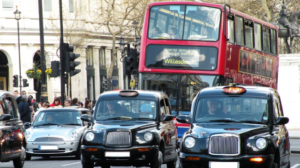If you are planning to drive in the United Kingdom (UK) there are a number of rules, regulations and restrictions which every motorist needs to be aware of to be able to drive safely and legally – not to mention some unusual rules of etiquette to follow.
We caught up with Darren from the UK’s Big Motoring World who gave us some advice for venturing out on the UK roads.
Firstly, if you are bringing a car from abroad, and you wish to drive in the UK, you need to know that we drive on the left and our cars are right-hand drive. This is contrary to the rest of Europe and can cause a lot of confusion for foreign drivers initially.
If you are bringing your own car into the country, there are also some legal guides to follow, without which you cannot drive. You will need to have your passport or ID card, your driving licence and your vehicle’s documents with you at all times. If your licence is not European, you need to check on the Government website to see if it is recognised in the UK.
You are also restricted from driving in the UK unless you have a European Accident Statement from your insurance company, accident and breakdown cover as part of your insurance policy, a Green insurance card and your insurance certificate. Without these, you cannot legally drive in the UK.
Another restriction for driving in the UK is that you must wear a seatbelt at all times while driving and while a passenger.
When it comes to speed restrictions in the UK, it’s important for drivers from elsewhere in Europe to realise that the measurements are in the metric system and that all limits and restrictions are in miles per hour, not in kilometres. There is a big difference! The speed at which you are allowed to drive depends on the type of road you are on but most streets are restricted to 30mph unless otherwise signposted.
Other restrictions in the UK include parking restrictions – there are some areas where no parking or stopping is allowed at any time, others where you need a special permit to park and some, where parking is limited to a certain amount of time.
All of these parking restrictions will be indicated by signs and parking meters will be in place in zones where you need to pay to park your car. In some cities in the UK there are completely pedestrianised areas where cars cannot drive at all.
People who don’t follow the parking restrictions, particularly on busy streets, are likely to face a parking fine which can be quite severe so always check the signs and the road markings before you leave your car parked somewhere. If in doubt, use a public multi-storey car park.
There are restrictions in the UK to prevent people from driving while under the influence of alcohol and the limit in England, Wales and Northern Ireland is 80 micrograms of alcohol per 100 millilitres of breath. In Scotland it is lower, at 50 micrograms.
The UK also has made it illegal to use a mobile phone while driving, including texting or holding a phone conversation. Hands-free systems can be used in the car but if the driver is distracted by answering a call the police can still pull them over.
Other restrictions on activities while driving, including eating and drinking at the wheel, and doing your hair and makeup while driving. These are activities which have led people to be prosecuted successfully in the UK in the past.
An unusual restriction which seems to get overlooked in the UK is around the use of car horns – using a car horn between 11.30pm and 7am in a built-up area is not permitted and generally horns should only be used to alert drivers to dangerous behaviour.
There are also strict restrictions on child car seats and where they should be placed in the car, in the UK. It depends if the car seat is front or rear facing, if your car has airbags, and the size of your child so make sure you check out the relevant rules for your family.
Cars should be taxed, go through the Ministry of Transportation and insured to be driven on British roads so make sure your car is considered roadworthy by British standards and has all of the necessary documentation and paperwork to prove it.
In the UK you can’t hold a driving licence until you are at least 17 years old so if you have teenagers who are coming to the UK they need to understand the age restriction for driving in this country.
Driving in the UK can be fun with the country roads, busy cities and long stretches of coastal roads, but it’s important to understand all of the restrictions and regulations which the law lays down on motorists here as they are there for the safety of everyone.
James Burke is a freelance writer who specializes in motoring and the automotive field. He writes for Big Motoring World and when he is not filling a blank page on his laptop he spends his free time hanging out in his local coffee shop reading the latest Stephen King book.







